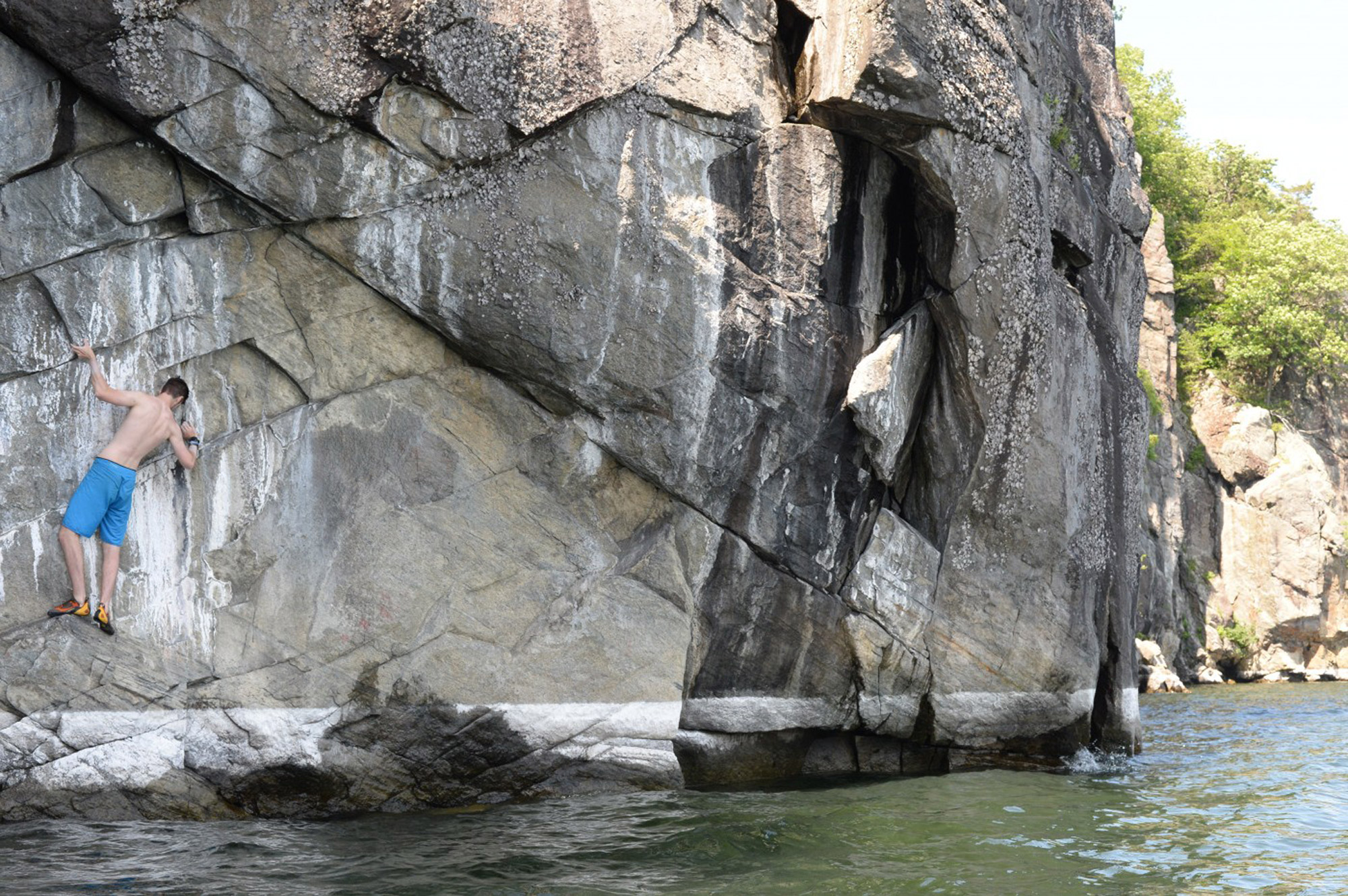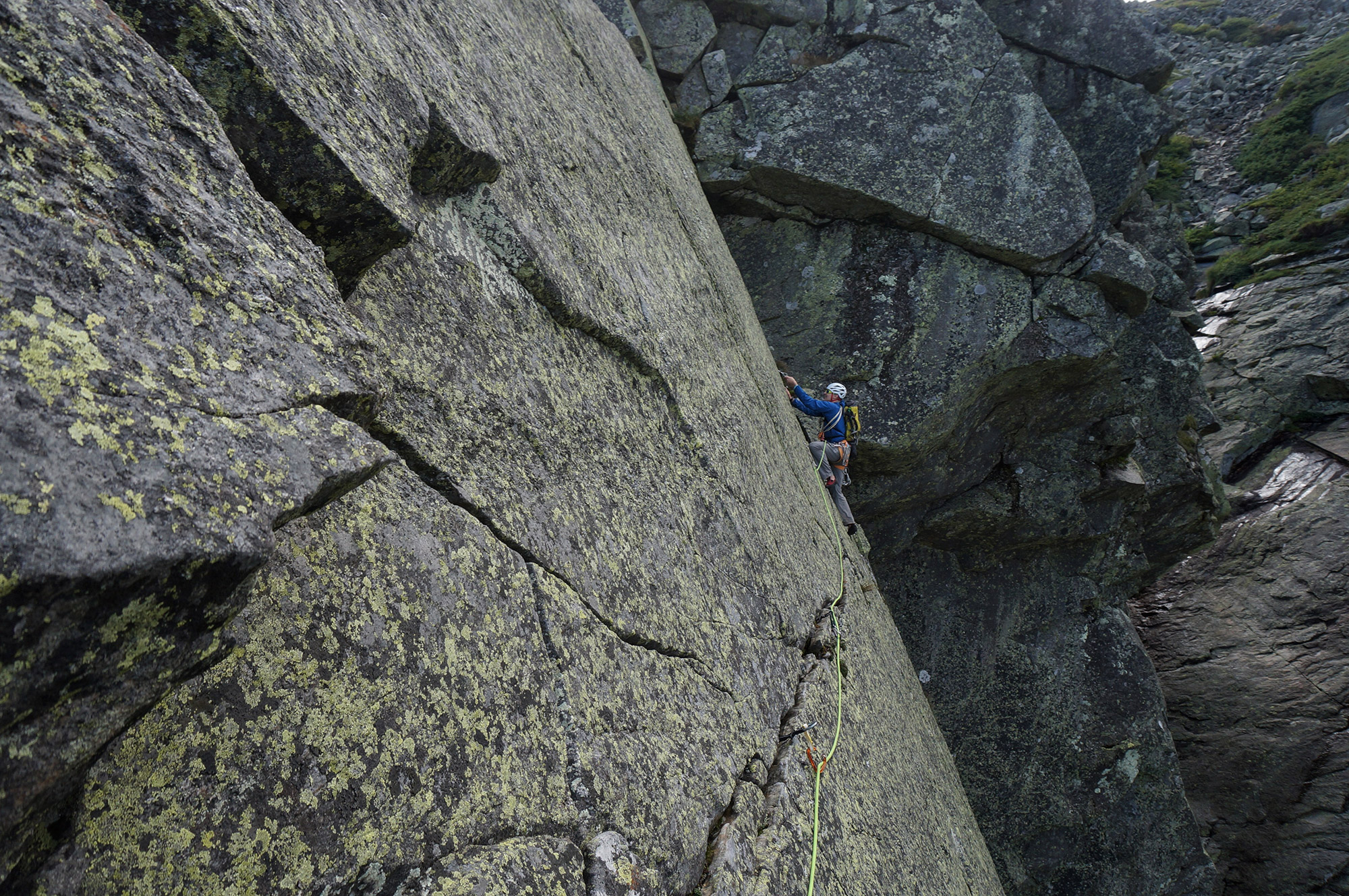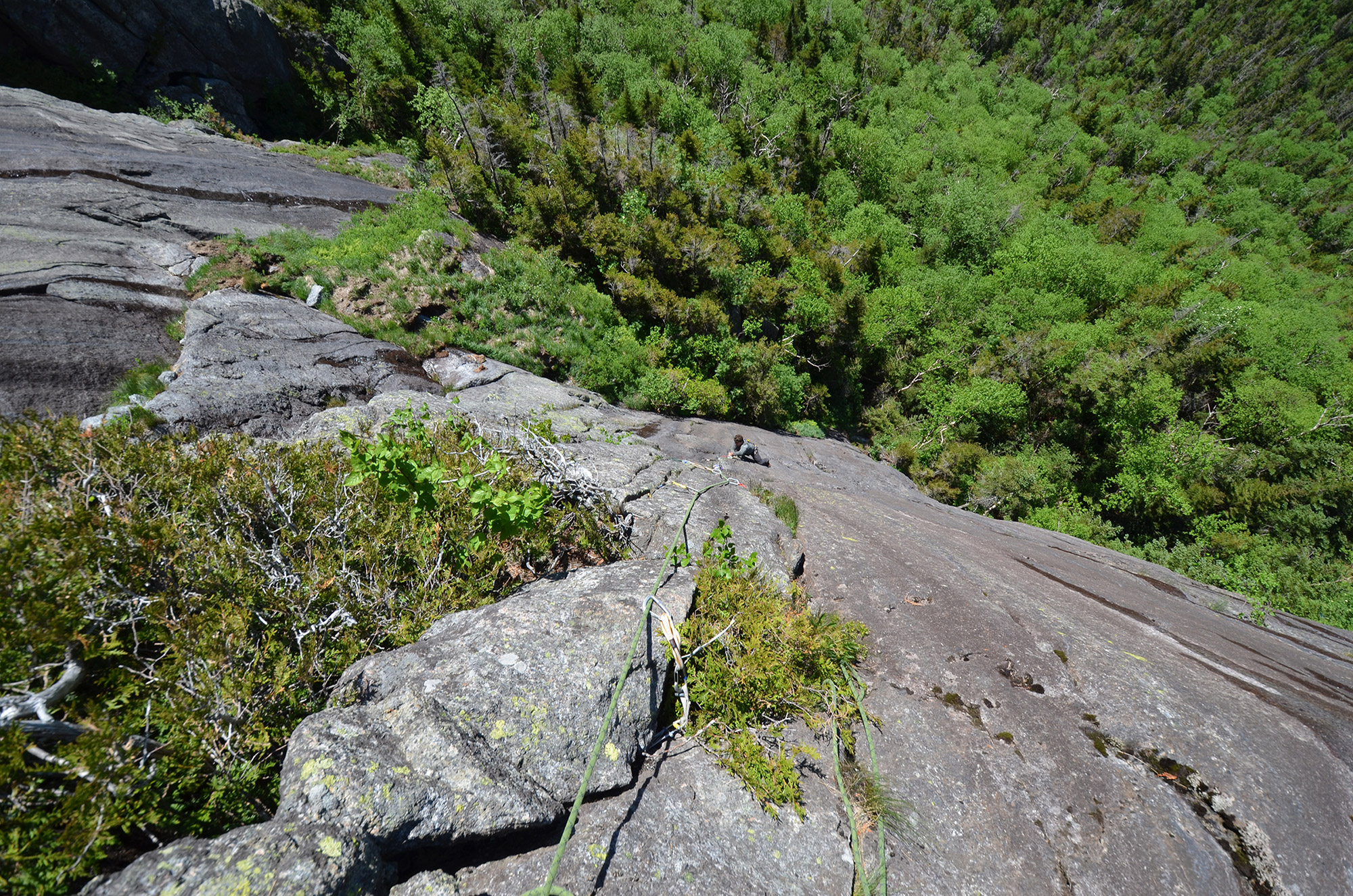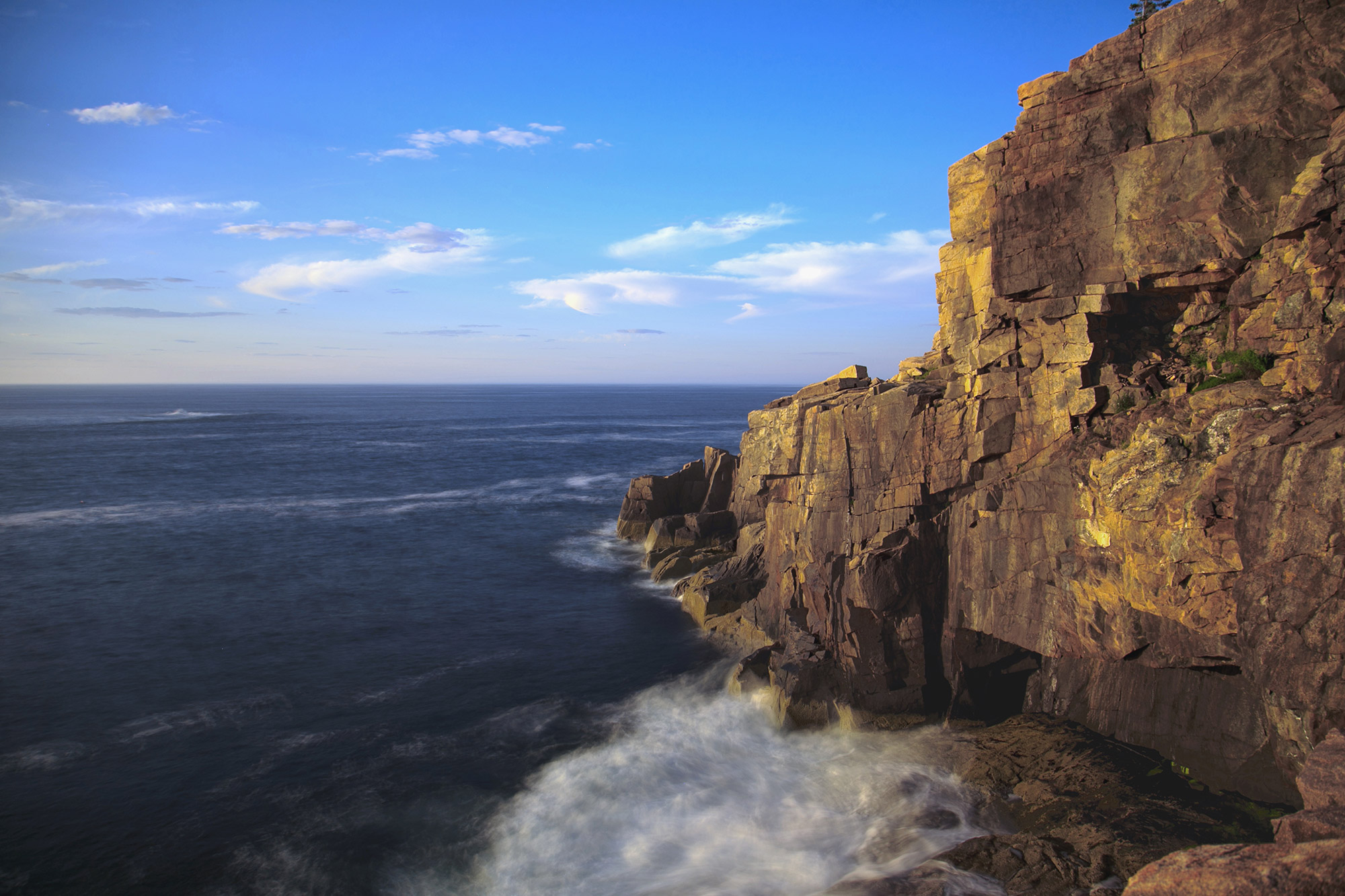Here in the Northeast we relish the prospect of summer after the long winter months, until we’re all salty and cursing the heatwave that just won’t dissipate. For climbers, heat is a minor nuisance, but sweat makes slick sending. Luckily, the Northeast is endowed with alpine terrain, miles of coastline and countless lakes and ponds, all of which offer cooler micro-climates. Read on for our recommendations of the best climbing areas to beat the heat this sun-drenched season.

Smuggler’s Notch, Vermont
Roadside Bouldering
The Notch, at a cool 2,165 feet above sea level, sits between Mount Mansfield and Spruce Peak in the Green Mountain state. This hobbit hole haven offers over 500 boulder problems as well as “alpine light” trad and sport routes. Trade winds blow through, dropping the ambient temperature to 10 to 20 degrees lower than the tourist town of Stowe, 1,200 feet below. “Bouldering inside the notch has this rather enchanting appeal to it. The cold air floats out from the ice deep within the granite & schist caverns creating these cool air pockets as you walk through,” says Nick Hernandez of Time to Climb.
Cruise up the scenic 108 for drive-in bouldering. Wind around hairpin turns and roadside rocks, park at one of the many pull outs and start climbing in mere seconds. When you’re ready to unwind, head back into town to enjoy a Heady Topper at the world renowned Alchemist brewery.

Lake Champlain Palisades, New York
Deep Water Soloing
Perhaps the tallest Deep Water Solo (DWS) routes in the Northeast, The Palisades feature 100+ feet of cliff jutting out from Lake Champlain. DWS means free solo climbing (without a rope) but over water; think Alex Honnold, except if one were to fall here they would land in a lake instead of on land.
The approach won’t be easy, nor will the climbing. Located at the easternmost edge of the Adirondacks, boat or paddle from the Westport Marina roughly 4.5 miles south. You will not have to worry about touching bottom (the lake has a depth of 140 feet), however a fall from up high can cause serious harm. Make sure you know how to properly hit the water (you want to enter in a pencil-like position). A gentle breeze will help dry some of your perspiration while climbing, though it won’t do anything for your Elvis leg.

White Mountains, New Hampshire
Easier Access Alpine Climbing
The White Mountains are among the highest peaks in the Northeast, which means cooler temperatures and some of the fastest recorded wind speeds on earth. The climbing options are diverse, from long multi-pitch on Cannon Cliff to daring high elevation (for the East Coast) trad on Huntington Ravine on Mount Washington to moderate notch climbing at places like Franconia and Crawford. Be highly vigilant of fast-changing and ornery weather, though the Whites can be a bit more forgiving than backcountry brethren out West due to quicker access to roads and huts.

Panther Gorge, Adirondacks, New York
Serious Backcountry Climbing
For a backcountry alpine adventure, Panther Gorge is a lesser visited remote locale with a strenuous approach. “It may be one of the most remote places in the Northeast,” suggests local legend, Kevin ‘MudRat’ MacKenzie, who has put up many FAs in the area.
The gorge, at 4,000 feet above sea level, lies between Mount Marcy and Mount Haystack, the tallest and third tallest mountains in New York, respectively. Just to get here requires an eight mile hike with 3,300 feet of elevation, followed by bushwhacking about to find the climbs. You will be rewarded with over 35 trad routes that range from 5.3 to 5.10a, with a mix of single and multi-pitch lines. These not-often-trafficked climbs can be chossy, mossy, and wet, and you’ll want to make sure you are well-equipped with backcountry skills from route-finding and wilderness first aid in order to be safe. You can find detailed descriptions of climbing routes in MacKenzie’s upcoming book, Panther Gorge, on his site adirondackmountaineering.com.

Acadia National Park, Maine
Coastal Climbing
Cooling sea breeze awaits climbers at Acadia. The ocean battered granite features some of the most classic climbs in the Northeast, from the salt-sprayed Adair by the Sea (5.10b/c) to the 3-pitch Story of O (5.6), among many others. America’s most easterly national park, Acadia is the first place the sun touches in the U.S. from October to March. In the summer, you will still want to arise early to capitalize on the daily changing low tide (otherwise your rope and belayer are liable to get caught in the waves at seaside areas like Otter Cliffs). Check out The Precipice for inland multi-pitch routes or Canada Cliff for some forested bouldering.
Aaron Gerry
Aaron Gerry is a freelance writer who spent the last year traveling and climbing through Eastern Europe. He’s a born-and-raised Massachusetts man who’s keen on trail running, hiking, and climbing. You can follow his travels at aarongerry.com.
Related Posts
April 12, 2024
Explore Like a Local: The Outdoor Mecca of North Conway, NH
There's a lot to love about this New…
April 3, 2024
5 Things To Do in the Boston Area During Mud Season
Adventure opportunities are abundant…




